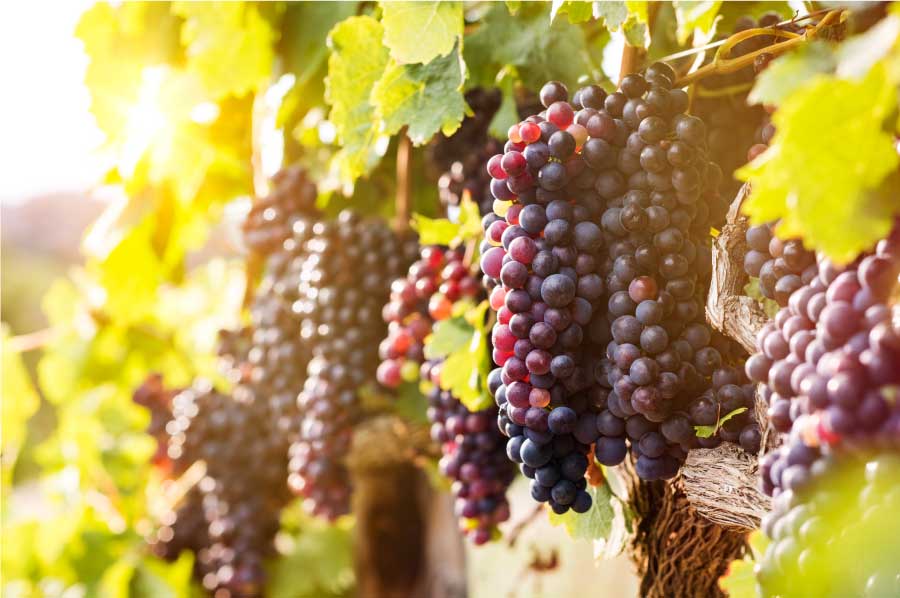The cultivated grapevine is one of the most important plants in the world. Gene-based combinative selection approach and introduction of variety which relies on soil analog and climate were recognized as important factors in determining the increase in grapevine efficiency. Varieties of grapevine have a high level of adaptability which lower the probability of harvest failure due to bad weather. All of this enhances the profitability of grapevine farmers in grape production. The wine business in Kazakhstan dates back to the 7th century AD when grapevines were brought in from neighboring countries, Uzbekistan and China. Despite just around 4% of Kazakhstan’s land is suitable for viticulture, the country manages to produce over 6.2 million gallons of wine each year from 32,120 acres.
Kazakhstan is the world’s highest level of grapevine consumption, yet has to import 80 percent of 30 million bottles all over the world. Due to the different demographic of vineyards, the covered culture method is used in productive vineyards. This method has several disadvantages: a large number of workers and its high cost. As the result, the amount of grapes produced has decreased. The supply of raw materials to Kazakhstan’s winemaking industry has become a major issue. By not covering vineyards for the winter, labor costs and effort can be significantly reduced in the spring. In 2001, Government of Kazakhstan has approved a rehabilitation and development program for grape and wine production.
The grapevine production is targeted approaching 200-220 thousand tons per year. The number can be achieved if a grape varieties can be added and the grape cultivation process can be developed. For years, Kazakh research institutes on fruit growing and viticulture has been importing grapes from all over the world. New variants are continually being added to the Ampelography collection, a field of botany concerned with the identification and classification of grapevines. A protracted selection on the development of a large group of new fresh grape varieties with diverse ripening periods that may compete in the republic’s local and international markets, is being carried out at the fruit and grape growing scientific research institute in Kazakhstan for the purpose of updating grape varieties.
This study aims to overview the phenology characteristics of the new grapevine variety and compare its quality and harvest indicators. In vitro method was conducted in the Zailiysky Alatau’s lowest mountain zone with average daily temperature 8,9 celcius. A blooming weighing procedure on 100 clusters was used to determine the average mass of clusters. A blooming weighing procedure on 100 clusters was used to determine the average mass of clusters. The yield of a bush was calculated by multiplying the number of clusters by their average weight. At this system of landing, a hectare’s productivity was characterized by multiplication of a crop from a bush based on the number of plants per hectare. All of these estimates were carried out utilizing the main cultivar approach. The analysis of variance was used to process the yield data. The normal approach was used to make observations. Zailiysky Alatau’s lowest mountain zone at an elevation of 1070 meters above the level of the sea, 77°14’ east longitude and 43°18’ north latitude, in Pomology Garden, a pilot farm in Almaty’s area. Priusadebny, Muscat Yubileyny, Kuibyshevsk early maturing, Iyulsky, and Almaty early maturing table varieties were used as study subjects
The zone has a distinctly continental climate. The average daily temperature is +8.9 °C, with an absolute high of +39 °C and a low of -34.5 °C, according to average yearly statistics. Precipitation totals 650 mm each year, with an uneven distribution throughout the year. The blooming of kidneys, the onset and conclusion of flowering, and the maturation of berries were all documented as phenological stages. A blooming weighing procedure on 100 clusters was used to determine the average mass of clusters. The yield of a bush was calculated by multiplying the number of clusters by their average weight. In this system of landing, a hectare’s productivity was characterized by the multiplication of a crop from a bush based on the number of plants per hectare. All of these estimates were carried out utilizing the main cultivar approach. In comparison to the recognized variety Almaty early-maturing, it has been proven that types Priusadebny, Iyulsky, and Kuibyshevsk early-maturing have a high degree of eyes wintering buds and may provide a high-quality crop in this location.
Details of the article can be accessed through this link:
Title: Agrobiological evaluations of newly introduced grapes varieties under climatic conditions of the south of Kazakhstan
Authors: Tzu-Chia Chen, Fouad Jameel Ibrahim Alazzawi, Dinesh Mavaluru, Trias Mahmudiono, Yulianna Enina, Supat Chupradit, Alim Al Ayub Ahmed, Mohammad Haider Syed, Aras masood Ismail, dan Boris Miethlich









